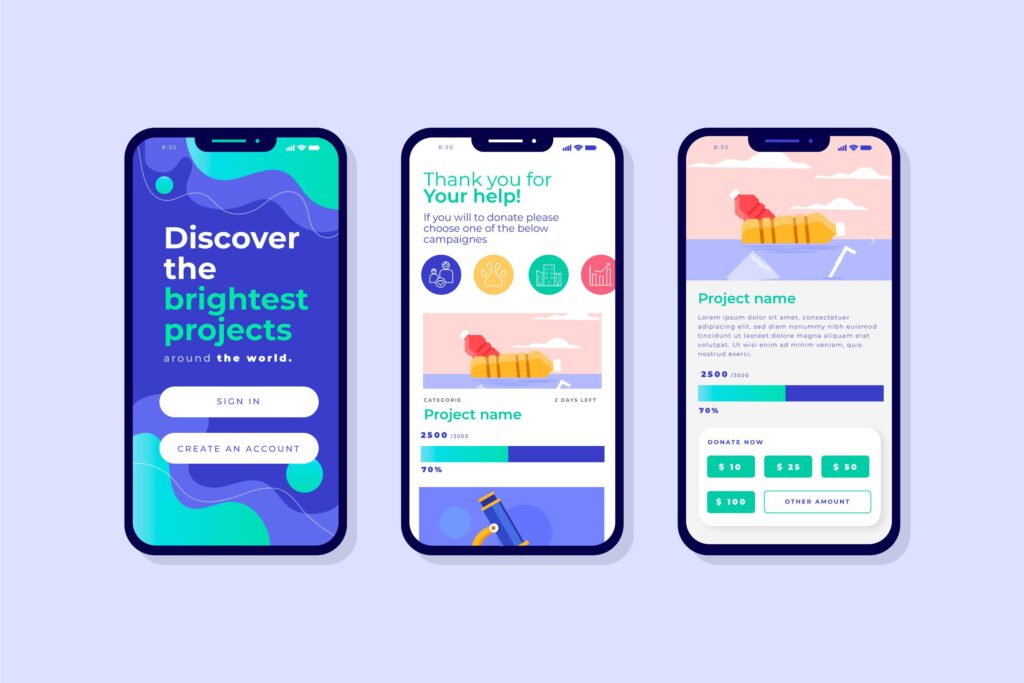Web design and SEO have always been interconnected. But what’s the depth of this connection? Many search engine optimization companies emphasize the importance of a well-optimized site. Yet, often, businesses overlook the role of effective web design in SEO.
Why Web Design Matters in SEO
When you think of SEO, keywords might come to mind first. But that’s just one piece of the puzzle. An SEO expert understands that the appearance and usability of a site matter too. Users want a seamless experience. If they don’t find it, they’ll leave.
Linking Visual Appeal to Rankings
Consider this. A beautiful, user-friendly website keeps visitors engaged. The longer they stay, the better it is for your search engine ranking. So, does that make web designers an SEO marketing ally? Absolutely.
A search engine optimization website considers both design and content. It’s not just about inserting the right keywords. It’s about making those keywords part of a holistic experience.
Prioritizing User Experience

We’ve all been there. A slow-loading page, difficult navigation, or unclear call-to-action frustrates us. Search engines notice this too. They reward sites that users love.
By prioritizing user experience, you’re making an SEO-friendly move. SEO website design ensures that users don’t just visit. They stay, interact, and hopefully, convert.
Mobile Responsiveness: No Longer an Option

More people browse on mobile devices now. A site that’s not mobile-friendly? That’s a no-go for many. Search engines know this trend. They rank mobile-optimized sites higher.
An SEO expert will always stress this. Mobile responsiveness is a crucial aspect of modern SEO marketing. Don’t overlook it.
Consistency is Key
Branding matters in web design. It also matters in SEO. Ensure your design elements remain consistent. This includes logos, colors, and fonts. A cohesive look improves recognition and trust. It also keeps users on your site longer.
Loading Speed: The Silent SEO Booster
Ever left a site because it took too long to load? We all have. Slow-loading sites aren’t just a user deterrent. They’re an SEO disaster.
Most search engine optimization companies prioritize this. They know a fast-loading site ranks better. With the right design techniques and optimization, you enhance user experience and SEO.
Balancing SEO and Aesthetics
Too many graphics can slow down a site. Yet, a bland site can drive users away. Striking a balance is crucial. An SEO expert knows how to integrate visuals without compromising speed.
Images and graphics can still be SEO-friendly. Proper tagging, formatting, and compression make a difference. The key lies in marrying visual appeal with optimization.
Call-to-Action (CTA) and SEO

A well-placed CTA does wonders. It guides users. It boosts conversions. But did you know it can also help with SEO?
An SEO marketing strategy often includes CTAs. They can drive user engagement. They can also lead to shareable content. Both boost SEO.
The Value of User-Friendly Content Updates
Every SEO expert will emphasize the importance of regularly updating content, especially through blogs. When these updates contain relevant keywords, they can significantly elevate your site’s search engine ranking. However, the benefits of keyword inclusion diminish if your site isn’t user-friendly. Users appreciate a seamless experience when accessing new content. Blogs that load quickly, display correctly across devices, and captivate through visual appeal tend to garner more attention and engagement. Such positive interactions signal to search engines that your content is valuable, prompting a more favorable ranking.
Marrying Aesthetics with Speed in Content Presentation
When it comes to SEO marketing, the saying “first impressions last” holds true. Imagine this: A user lands on your blog post, but it takes ages to load, or the layout appears chaotic. Chances are, they’ll leave even before skimming through your keywords. In contrast, a fast-loading, visually pleasing blog can engage readers from the get-go, encouraging them to explore more. Incorporating visually engaging elements, like infographics and high-quality images, without compromising loading speed, can be challenging. Yet, it’s a feat that search engine optimization companies prioritize, knowing that the fusion of aesthetics and speed directly impacts rankings.
Always Think of Your Audience
Who visits your site? What do they want? Design with them in mind. An SEO website caters to its audience. Tailored content, visuals, and structure make for better engagement.
Remember, search engines prioritize user satisfaction. Cater to your audience, and search engines will reward you.
The interplay between web design and SEO is undeniable. They don’t just coexist; they complement each other. Ignoring one can undermine the other. By harnessing their synergy, businesses stand out in the digital landscape.
Choose the right search engine optimization companies, and they’ll stress this connection. They’ll work to give you a site that’s both beautiful and optimized. The outcome? A high-performing SEO website that users and search engines love.
With the right approach and expertise, the synergy between web design and SEO can lead to remarkable results. Embrace it, and watch your online presence flourish. Contact us today for your web design and SEO needs!


Comments are closed